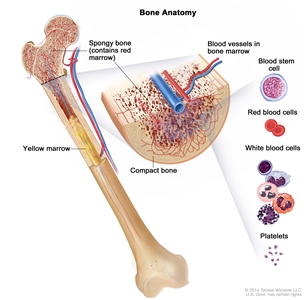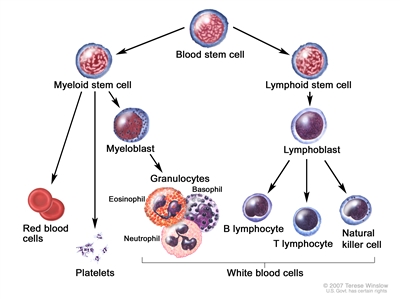Health Library
Childhood Acute Lymphoblastic Leukemia Treatment (PDQ®): Treatment - Patient Information [NCI]
- What is childhood acute lymphoblastic leukemia?
- Causes and risk factors for childhood acute lymphoblastic leukemia
- Genetic counseling for children with acute lymphoblastic leukemia
- Symptoms of childhood acute lymphoblastic leukemia
- Tests to diagnose childhood acute lymphoblastic leukemia
- Getting a second opinion
- Risk groups for childhood acute lymphoblastic leukemia
- Types of treatment for childhood acute lymphoblastic leukemia
- Treatment options for childhood acute lymphoblastic leukemia
- Prognostic factors for childhood acute lymphoblastic leukemia
- Side effects and late effects of treatment
- Follow-up care
- Coping with your child's cancer
- Related resources
- About This PDQ Summary
What is childhood acute lymphoblastic leukemia?
Childhood acute lymphoblastic leukemia (also called ALL or acute lymphocytic leukemia) is a cancer of the blood and bone marrow. This is the most common type of cancer in children. It accounts for about 25% of all childhood cancers in the United States and occurs most often in children aged 1 to 4 years.

Anatomy of the bone. The bone is made up of compact bone, spongy bone, and bone marrow. Compact bone makes up the outer layer of the bone. Spongy bone is found mostly at the ends of bones and contains red marrow. Bone marrow is found in the center of most bones and has many blood vessels. There are two types of bone marrow: red and yellow. Red marrow contains blood stem cells that can become red blood cells, white blood cells, or platelets. Yellow marrow is made mostly of fat.
The bone marrow and thymus make blood stem cells (immature cells) that become mature blood cells over time. A blood stem cell may become a myeloid stem cell or a lymphoid stem cell.
A myeloid stem cell becomes one of three types of blood cells:
- red blood cells, which carry oxygen throughout the body
- granulocytes, which are a type of white blood cell that helps the body fight infection
- platelets, which help the blood clot
A lymphoid stem cell becomes a lymphoblast cell and then one of three types of lymphocytes (white blood cells):
- B lymphocytes, which make antibodies to help fight infection
- T lymphocytes, which help B lymphocytes make the antibodies that help fight infection
- natural killer cells, which attack cancer cells and viruses

Blood cell development. A blood stem cell goes through several steps to become a red blood cell, platelet, or white blood cell.
ALL occurs because too many stem cells become lymphoblasts that do not mature into B lymphocytes or T lymphocytes. These cells are also called leukemia cells. Leukemia cells are not able to fight infection very well. Also, as the number of leukemia cells increases in the blood and bone marrow, there is less room for healthy red blood cells, platelets, and white blood cells. This may lead to anemia, easy bleeding, and infection.
ALL usually worsens quickly if it is not treated.



